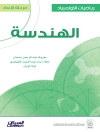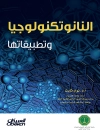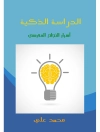Gaining an understanding about the barriers in transitioningfrom high school to college is crucial to improving college accessand matriculation–particularly for low-income families andfirst-generation college-goers. These obstacles include manyfactors, such as:
* Lack of access to resources at home or school
* Not having a rigorous college-preparatory curriculum or nottaking advantage of these courses
* Misperceptions about the college-going process.
This volume introduces innovative and effective ways to ease thetransition process. One essential question examined is the role ofhigh schools and whether they should take a more active role inpreparing students for college. While some interventions in thisissue are designed for school-wide implementation, others are moretargeted and focus on certain aspects of the college process suchas financial aid, but all recognize the role of high schools inshaping students’ college-going aspirations andbehavior.
By including the most cutting-edge and rigorous research onimproving college access, this volume:
* Delineates the obstacles adolescents face in their transitionfrom high school to college
* Increases understanding of the mechanisms contributing to gapsin college enrollment
* Highlights how interventions can help to ease thesechallenges.
This is the 140th volume of New Directions for Youth Development, the Jossey-Bass quarterly report seriesdedicated to bringing together everyone concerned with helpingyoung people, including scholars, practitioners, and people fromdifferent disciplines and professions.
İçerik tablosu
Issue Editors’ Notes 1
Barbara Schneider, Justina Judy
Executive Summary 5
1. Pathways to college and STEM careers: Enhancing the highschool experience 9
Barbara Schneider, Michael Broda, Justina Judy, Kri Burkander
This university-community partnership providing collegementoring and additional supports is having an impact oncollege-going rates and STEM interest in postsecondaryeducation.
2. Research into practice: Postsecondary success in the Chicago Public Schools 31
David W. Johnson, Eliza Moeller, Mathew Holsapple
A five-tenet framework guides the work of the Consortium on Chicago School Research in understanding and ameliorating thechallenges facing low-income youth as they encounter the transitionto college.
3. Lessons learned from a data-driven college access program:The National College Advising Corps 55
Eileen L. Horng, Brent J. Evans, anthony l. antonio, Jesse D.Foster, Hoori S. Kalamkarian, Nicole F. Hurd, Eric P.Bettinger
A successful data-driven partnership between researchers at Stanford University and the National College Advising Corps hasfacilitated improved college access for low-income students.
4. The not-so-lazy days of summer: Experimental interventionsto increase college entry among low-income high school graduates77
Benjamin L. Castleman, Lindsay C. Page
Peer mentoring and text messaging programs are shown to behelpful and cost-effective strategies for addressing the phenomenonof ‘summer melt’ observed among low-incomecollege-bound students.
5. Is traditional financial aid too little, too late to helpyouth succeed in college? An introduction to The Degree Projectpromise scholarship experiment 99
Douglas N. Harris
Promise scholarships, such as The Degree Project, offer analternative to traditional aid programs by making commitments tostudents early on in high school and providing motivation andencouragement as students prepare for college.
Index 117
Yazar hakkında
Barbara Schneider and Justina Judy are the authors of Innovations in Improving Access to Higher Education: New Directions for Youth Development, Number 140, published by Wiley.












